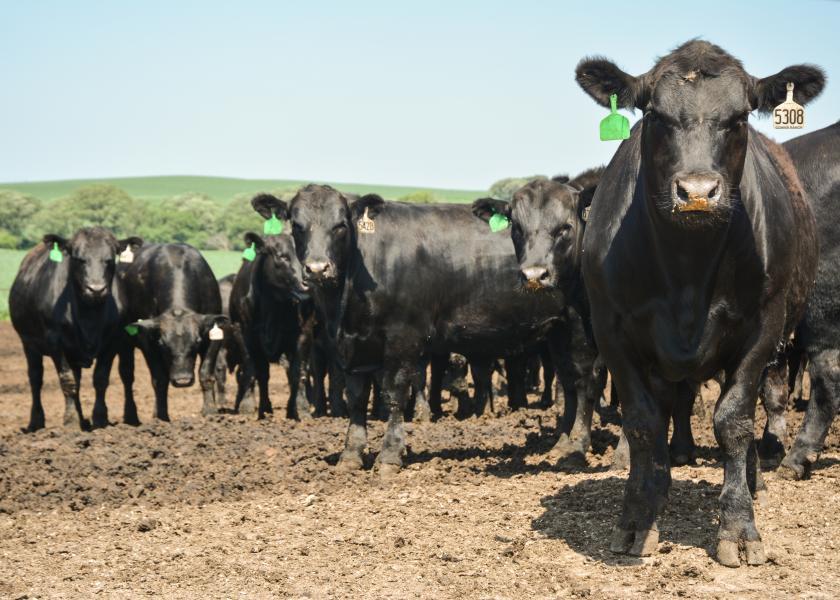NCBA: Current '50/14' Plan Not the Best Fit for Entire Industry

Earlier this week Senators Chuck Grassley, (R-Iowa) and Jon Tester (D-Mont.), reintroduced bi-partisan legislation that would require 50% of a meat packer’s weekly volume to be purchased on the open or spot market, often referred to as the “50/14” bill, because of the 14-day delivery window for the cattle.
In the announcement of the legislation, Grassley says that it is meant to “foster efficient markets while increasing competition and transparency among meat packers who purchase livestock directly from independent producers.”
“The lack of transparency in cattle pricing isn’t a new problem. Unfortunately, the COVID-19 pandemic has only highlighted the need for additional price transparency measures to ensure producers are getting a fair price for the hard work of raising cattle,” he continued.
While the reintroduction of the bill was applauded by some cattlemen, not all in the industry agree. The National Cattlemen’s Beef Association (NCBA) released a statement calling the legislation “not the solution the industry needs,” and instead calls for a voluntary approach or a plan more similar to Senators Deb Fischer (R-Neb.) and Ron Wyden’s (D-Ore.) “Cattle Market Transparency Act.”
Ethan Lane, vice president of governmental affairs at the NCBA joined Chip Flory, host of AgriTalk and Greg Henderson, editorial director of Drovers, to discuss the plan on the show. To start, the plan doesn’t fit with NCBA policy, Lane says.
“We understand that in parts of the country like Iowa, where they trade 50% of their cattle on cash, that's a solution. That makes sense. But the majority of the industry—certainly in the ag econ community—has all really evolved in this conversation, past the idea of a blanket cash mandate, to regional negotiated trade levels,” he says. “Because they are so different in Texas and Kansas versus Iowa, or Nebraska. And that's where we're all really focused right now is on trying to increase those regional trade levels to a point where we have that price discovery that we need, and we just don't think that a blanket 50% gets that done.”
Building on the idea that different parts of the country, for example the Corn Belt where there’s large feedyards, versus the western cow-calf heavy states, could have a difference in opinion in how to move forward, Henderson asked Lane if the NCBA has seen a divide in its membership on the issue?
“It's not quite as simple as just geography or even segments. We have Western cow-calf states, like Idaho that are really opposed to any government intervention. Both Montana Senators are on this 50/14 bill, but the Montana Stockgrowers Association is opposed to it,” Lane says. “And this is the point we've tried to continue to make. This is not settled business in the cattle industry. Everybody wants to get negotiated trade levels up, but how we get it done without upsetting everybody's applecart is really still where we are in this conversation.”
Lane says the NCBA’s working group has representation from cattlemen on both sides of the issue and it meets a few times a week to try to make progress and find common ground.
Another objection, Henderson says, is that the “50/14” rule would impact the marketing agreements that feedyards have, whether it be independent feeders or corporate feeders, with the packers.
“[The packers] have their own challenges, because they might be running a plant that's doing all NHTC beef for a certain market or they're doing runs for China, and they say it's harder for them to source that in the cash market. So they need those dependable supplies,” Lane says. “And then our producer segment is coming to us and saying, we asked for these kinds of deals, we want those premiums, we like that structure. But the other side of that is we have to have that price discovery for any of those alternative arrangements to work properly. And there's, there's also no disagreement about the fact that we don't have enough price discovery to really inform the price on those formulas and grids.
“But we've got to do it in a way that's authentic, so that we're not giving more leverage to the packer. I mean, we're trying to restore leverage to the producer segment, we don't want to accidentally put a mandate in place that gives them more ability to issue a no competition bid to a producer,” Lane continues.
But would an unintended consequence be a possible cap on weekly bids?
“We've had folks in the packing segment tell us that if they're given a mandate, they'll buy cattle cheaper. They will grind us down on price. If we have a lot of competition for cattle, maybe we can get by that. But it is something we've got to make sure we pay attention to,” Lane says. “At the end of the day, this has been sold as a silver bullet, but it's one piece of a much bigger puzzle. Leverage has a lot of different components. We've got to make sure all of them are moving back in the producer direction.”
Flory asks if a catalog or library of the formula-driven contracts that are popular in the Southern market, making those details more available for producers, might resolve some of the issue?
“We support that portion of the Fisher bill. There are producers that tell us it'd be really helpful to know what those look like what kind of terms are other people able to negotiate,” Lane says. “But that is just a little bit of a blueprint to what's possible, you still have to go cut your own deal. If that contract library can arm producers with an understanding of what's out there, and that's helpful, and we're certainly hearing that from some of our producers that that would be a tool they'd be able to really use, we’re supportive of that.”
Related:
Grassley Reintroduces '50-14' Bill, Cattlemen React
Fischer, Wyden Introduce Cattle Market Transparency Act of 2021







